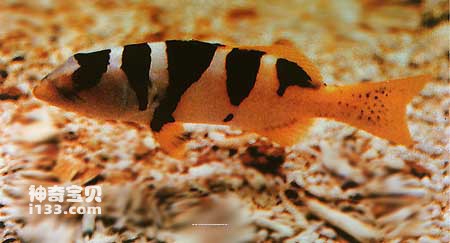Black-spotted spiny bass. Common name: Black-and-white gillfish. The number of pectoral fin rays is mostly 17. The ends of the dorsal and anal fin rays are rounded, and the juvenile fish has 6 black horizontal spots on its head and sides. The adult body is brown with very small blue spots. Body length 15 cm. Distribution area: South China Sea, tropical waters of the western Pacific.

animal tags:
We created this article in conjunction with AI technology, then made sure it was fact-checked and edited by a Animals Top editor.